Routes of Santiago de Compostela in France
By Rachel Heller
What are the Routes of Santiago de Compostela in France?
Ever since the 10th century, but especially in the Middle Ages after the recapture of Spain from the Moors and the loss of Jerusalem by Christians, Christian pilgrims have made Spain their destination. The cathedral in the town of Santiago de Compostela was (and is) the goal, since it contained important relics of Saint James.
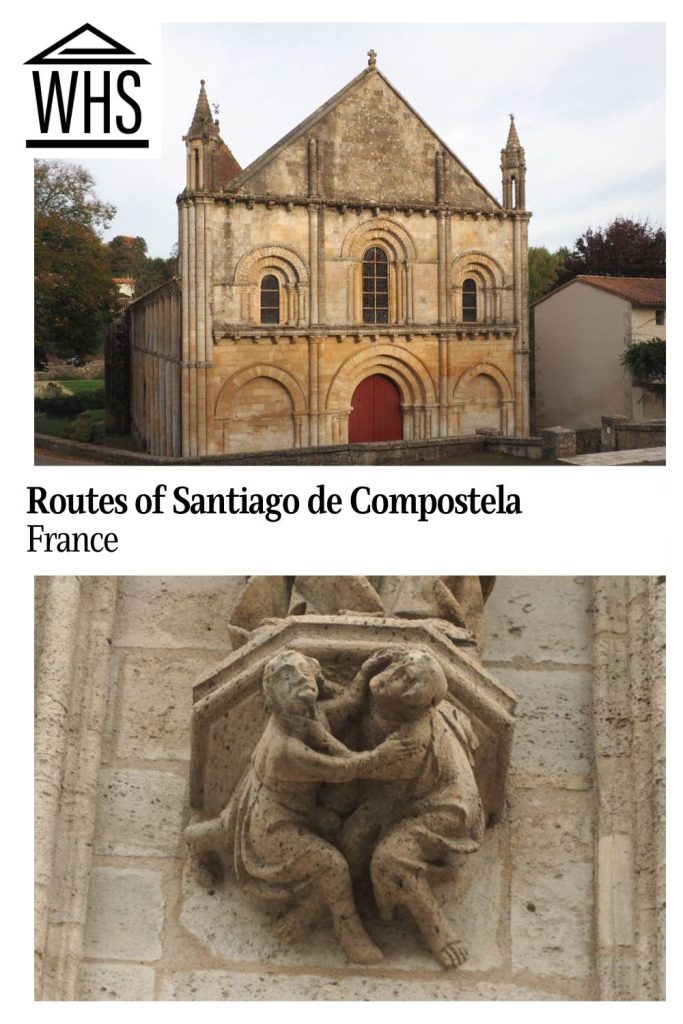
Disclosure: This article contains affiliate links. Making a purchase through an affiliate link will mean a small commission for this website. This will not affect your price. Privacy policy.
Christians traveled on foot as an act of faith from all over Europe and crossed France primarily along four main routes. This UNESCO site includes 78 locations along these routes. Most are churches, abbeys, monasteries, convents and cathedrals. The list also includes a city gate, a few bridges, some pilgrims’ hospices, and seven sections of one of the routes itself: the Chemin du Puy. There’s even one dolmen on the list. It’s much more ancient than the routes, but is included because it was a pilgrim stop; a medieval cross stands nearby.
Why are the Routes of Santiago de Compostela in France a UNESCO World Heritage site?
These pilgrimage routes “played a key role in religious and cultural exchange and development during the later Middle Ages,” according to UNESCO. The needs of the pilgrims for food and shelter as they walked hundreds or thousands of miles, as well as their spiritual needs, were catered to by the institutions along the route. The route “bears exceptional witness to the power and influence of the Christian faith among people of all classes and countries in Europe” both in terms of the choice the pilgrims made to walk such long distances and the growth of institutions focused on supplying their needs.
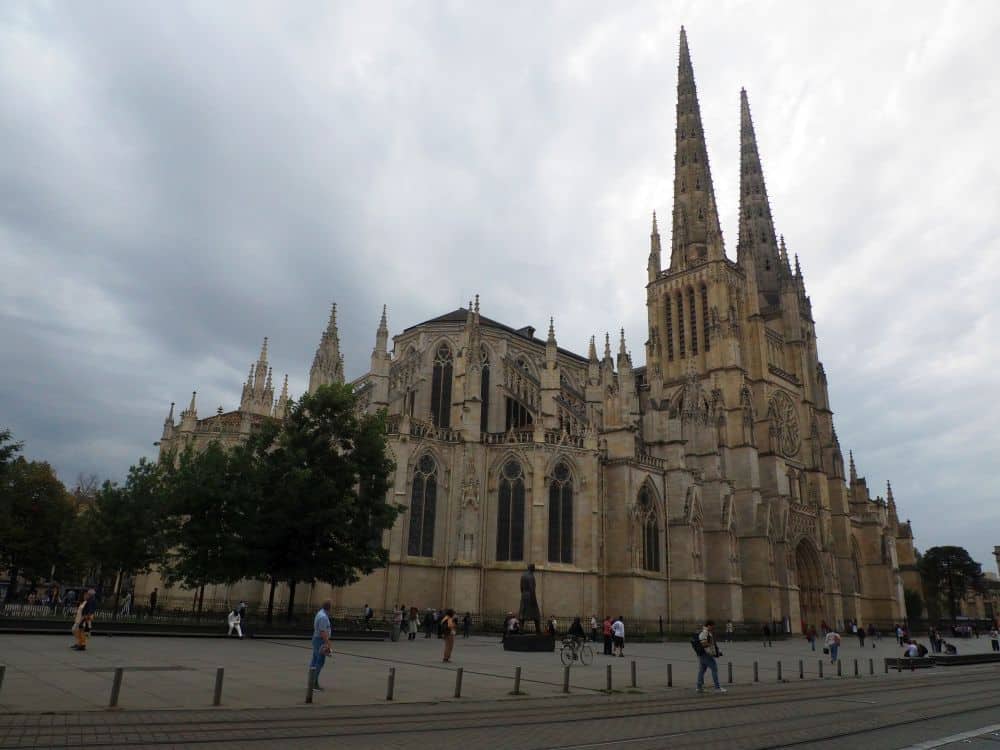
What can you expect on a visit to the Routes of Santiago de Compostela in France?
I’ve only seen a few of the churches and cathedrals along the route, but I think it’s safe to say you’ll find churches dating to the Middle Ages or earlier in all shapes and sizes. Some of them were major stops at the time; some became more important gradually. Most of them are still Catholic parish churches and are still used to this day. Some are well-maintained and popular with tourists – places like Mont-Saint-Michel, Amiens Cathedral, Vézelay Church, and Bourges Cathedral, which are all separate UNESCO sites as well. Others are rather down-at-the-heels, really only in use by locals.
With the recent revival of interest in walking the pilgrimage routes, whether for spiritual reasons or as a form of travel, some of the locations have returned – if they ever stopped – to offering services to passing pilgrims. This means, for example, providing a hostel-style bed in a monastery or convent or, perhaps, a simple meal.
The ones my husband and I visited that weren’t major tourist attractions were open during the day, no matter when we showed up, except for a couple that were undergoing much-needed renovation. Usually, we found them entirely empty: places of calm and contemplation often in the middle of loud cities. They were generally not well-lit but had all of the typical elements of medieval churches: Romanesque and/or Gothic arches, for example, and ancient sculptural carvings inside and out. Most depictions of saints are missing their heads – a product of the frenzy of the French Revolution.
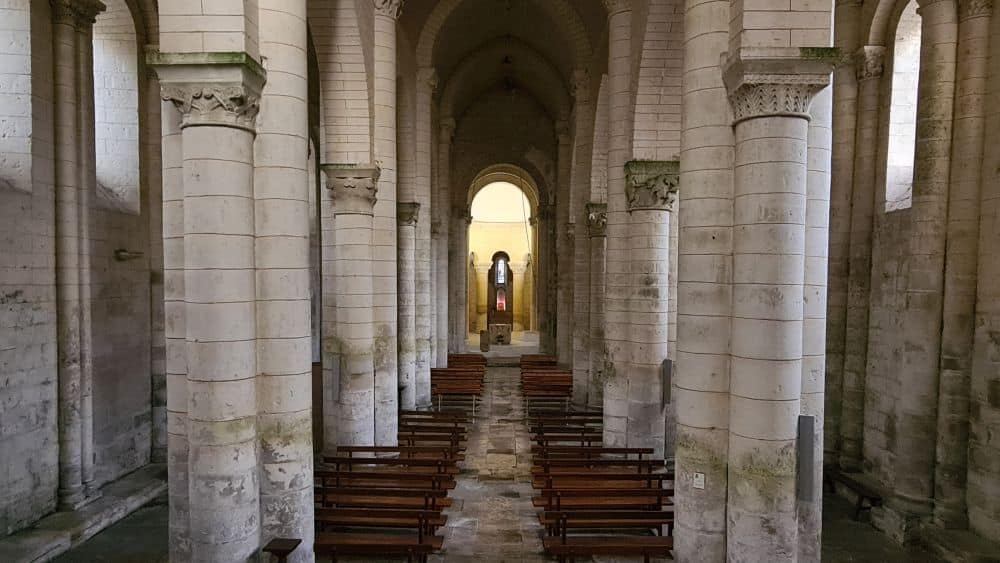
Are elements on this route worth visiting?
If you are traveling in France, you’re likely to be near one or more pretty much anywhere you travel, and if you are, they are certainly worth visiting. It would depend on your level of interest whether you think they are worth making a special trip. If you’re doing a road trip, it would be easy enough to get your fill of medieval churches and abbeys by driving from one to the next.
Take a look at the map below, where every one of the 78 elements is marked.
If you enjoy walking multi-day routes, this might be worth becoming a destination rather than a stopover. Choose one of the ancient routes and walk all the way to Santiago de Compostela in Spain. Walkers generally start in Arles, Paris, Vézelay, or Le Puy, with the Paris route being the longest. The Paris, Vézelay and Puy routes cross into Spain in St Jean Pied de Port and join up with the Camino Francés and Routes of Northern Spain (also a UNESCO site). The Arles route crosses into Spain near Aragón and joins the Camino Francés further into Spain near Pamplona. If you’re going to do any of these routes, be prepared to walk 1,500-1,600+ kilometers (900-1,000+ miles) before you reach the town of Santiago de Compostela itself and its UNESCO-listed old town and Cathedral.
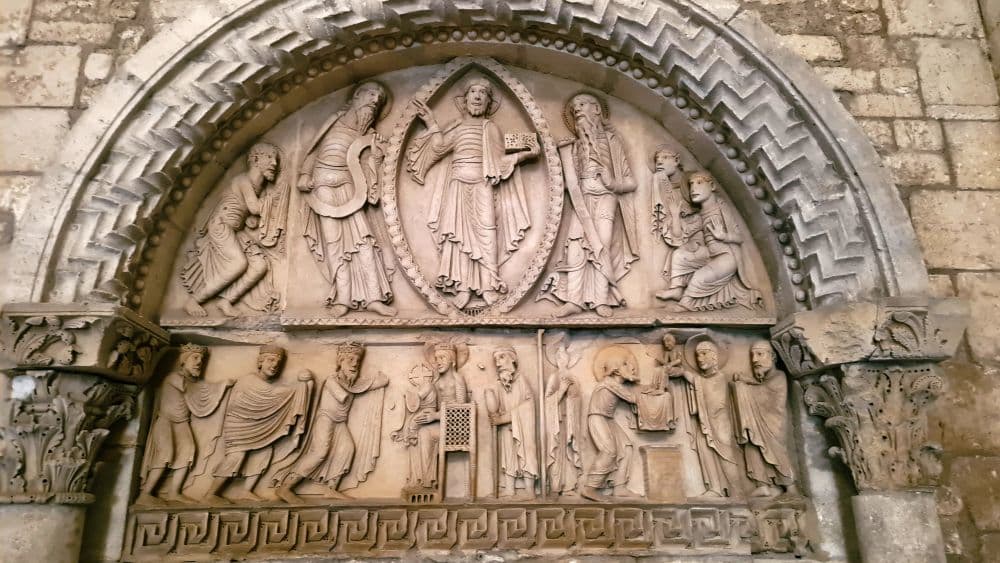
What sorts of travelers would like the Routes of Santiago de Compostela in France?
People who enjoy multi-day walking routes would, of course, enjoy any of these routes. They’d afford an enjoyable way to take in, slowly and mindfully, the French countryside as well as its cities. They’re also less well-known and thus less busy than the routes in Spain.
The Catholic faithful might find this a fulfilling way to express their spirituality. Even without walking or being particularly religious, people like me who enjoy seeing medieval art and architecture and learning about the history it expresses would enjoy any of the 78 places on the list.
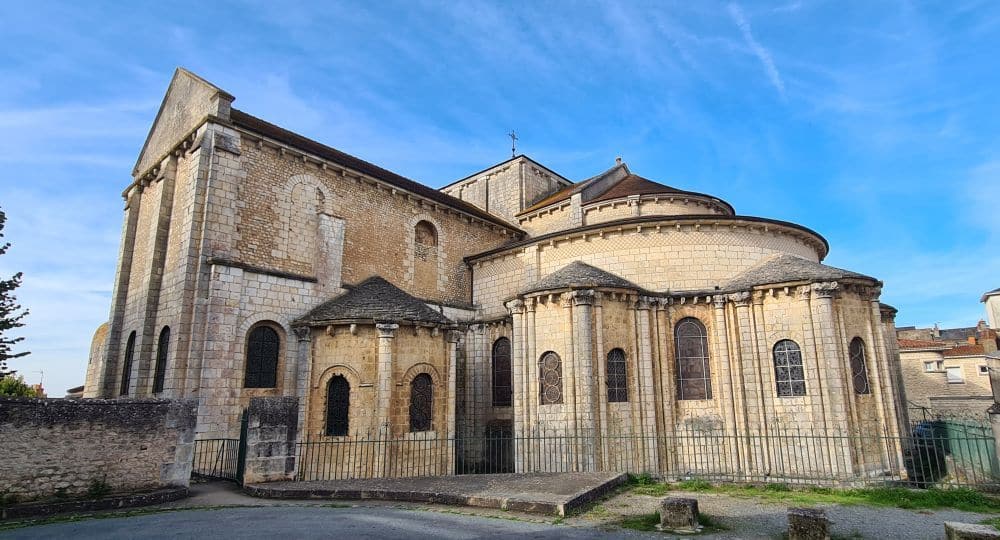
Tips for visiting the Routes of Santiago de Compostela in France
Since I haven’t actually walked any of the routes in this UNESCO site, I can’t give tips on walking. (Can you? Please add a comment below!)
What I can do is advise that, in planning any trip in France, study the map carefully to see if any of the elements of this route are near your planned itinerary. The churches, cathedrals and abbeys are worth a short visit: they can be oases of calm. They often contain medieval artwork that is unknown and either a) masterful or b) charmingly primitive.
Book accommodations in France as you plan your trip.
If you’re planning a road trip like the one we took, compare rental car options here.
On the other hand, the churches and cathedrals that are UNESCO sites in their own right – the ones I linked to above – will be busier, as will any large cathedral in a city. You’ll find less of the calm and more of the masterful art and architecture at those. The fact is that the most popular tourist destinations are the most popular for a reason, and are worth facing the tourist hordes to visit them.
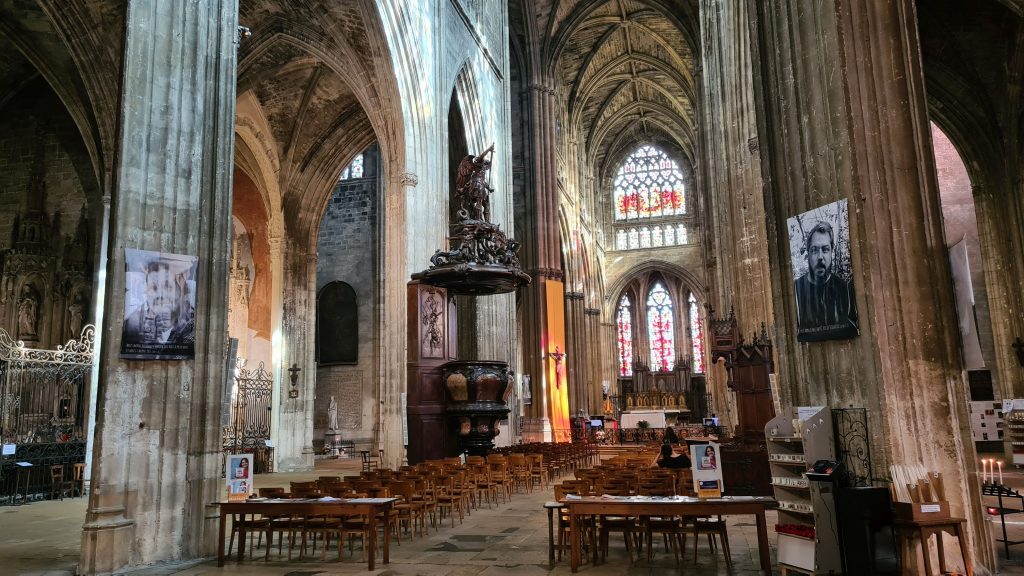
The general rule is that you’ll find fewer crowds early in the morning just as the church or cathedral opens or late in the afternoon just before it closes. For the less well-known churches and other sites on the list, go anytime. Unless there’s a service or event happening, you won’t find crowds.
Be respectful in the churches and cathedrals, especially the non-touristy ones. Take off your hat. Don’t speak loudly. If anyone else is there praying, don’t disturb them. Keep your children in check. If there is a service going on, slip into a back pew and watch, but don’t go walking around until the service is over.
Where are these routes?
Here’s another map of the locations, this time a Google map so you can use it for navigation. Note: pont means “bridge” and église means “church.”
Missing from the Google map are the seven sections of still-existing pilgrimage routes that are part of the UNESCO site, all part of the Chemin de Puy. They are:
- Between Nasbinal and Saint-Chély-d’Aubrac (17 km or 10.5 mi)
- Between Saint-Côme-d’Olt and Estaing (17 km or 10.5 mi)
- Between Montredon and Figeac (18 km or 11 mi)
- Between Faycelles and Cajarc (22.5 km or 14 mi)
- Between Bach and Cahors (26 km or 16 mi)
- Between Lectoure and Condom (35 km or 22 mi)
- Between Aroue and Ostabat (22 km or 13.5 mi)
The French tourism board’s website is the place to start for more information and links about these routes.
Have you been to any of the elements of this serial property? Or have you walked any parts of the route? If so, do you have any additional information or advice about this UNESCO World Heritage site? Please add your comments below!



